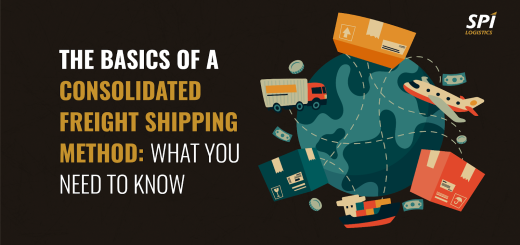German DIY Enthusiasts: Affordable Chinese Tools & Building Supplies via Group Shipping – A Practical Guide
Germany’s DIY culture is thriving, with 68% of households tackling home projects ranging from kitchen renovations to garden sheds. Yet rising material costs and fragmented logistics are forcing many enthusiasts to rethink their sourcing strategies. Enter China—a global manufacturing powerhouse offering high-quality tools, lumber, and building supplies at 30–50% lower costs than European alternatives. This guide reveals how German DIYers can leverage group shipping to access these savings while navigating EU regulations and ensuring project success.
Why Source DIY Tools & Supplies from China?
1. Cost Efficiency for Tight Budgets
Chinese manufacturers dominate global production of DIY essentials, leveraging economies of scale to cut costs. For example:
- Power Tools: A 10mm cordless drill from a Chinese brand like Hilti China costs €80–€100, vs. €150–€200 for European equivalents.
- Lumber: Pressure-treated plywood from Guangdong Forest Products sells for €25/m² in China, compared to €40/m² in Germany.
- Fasteners: A pack of 500 stainless steel screws costs €5–€7 in China, vs. €12–€15 locally.
2. Diverse Product Range for Niche Projects
From vintage-style hinges to industrial-grade concrete mixers, Chinese suppliers cater to every DIY need. Platforms like Alibaba and Made-in-China list over 50,000 verified manufacturers specializing in:
- Tools: Cordless drills, circular saws, and laser levels.
- Building Materials: Plywood, drywall, roofing tiles, and composite decking.
- Finishes: Paints, stains, and sealants (including low-VOC options for eco-conscious projects).
3. Quality That Rivals Traditional Brands
Many Chinese factories hold international certifications (e.g., ISO 9001, CE marks) and produce tools meeting EU safety standards. For instance, Zhejiang Crown Tools manufactures impact drivers tested to 10,000+ RPM, matching the performance of German brands like Bosch.
The Power of Group Shipping for DIYers
Group shipping—consolidating multiple orders into a single shipment—dramatically reduces costs and streamlines logistics. Here’s why it’s a game-changer for German DIYers:
1. Lower Per-Unit Shipping Costs
- Ocean Freight: A 20ft container (28m³) from Shenzhen to Hamburg costs €1,800–€2,500. Splitting this among 10 DIYers reduces individual costs by 70% (€180–€250 vs. €600+ for solo shipments).
- Rail Freight: China-Europe rail routes (e.g., Chengdu-Duisburg) offer door-to-door delivery in 16–22 days, with per-kg rates as low as €2.50 for bulk cargo.
2. Reduced Customs Complexity
Group shipments simplify documentation and reduce the risk of customs delays. For example:
- Single HS Code: Consolidated shipments use one harmonized system code (e.g., 8467.10 for hand tools), avoiding per-item classification errors.
- Shared Liability: Logistics providers like DHL Global Forwarding handle customs paperwork for the entire group, minimizing individual paperwork.
3. Eco-Friendly Benefits
Fewer individual shipments mean lower carbon emissions. A 2024 study by Fraunhofer IML found that group shipping reduces CO₂ output by 40% compared to fragmented deliveries.
Key Steps to Successful Group Shipping
Step 1: Identify Reliable Chinese Suppliers
- Vet Suppliers: Prioritize ISO 9001-certified factories with export experience to Europe. Use platforms like Global Sources or Tundra to verify reviews and sample quality.
- Request Prototypes: Test tools for durability (e.g., drill bit sharpness) and materials (e.g., lumber moisture content <15%).
Step 2: Optimize Logistics with a Trusted Partner
- Choose a Freight Forwarder: Work with providers like Freightos or DB Schenker that specialize in EU-China group shipments. They offer:
- Real-time tracking and customs clearance.
- Insurance options (e.g., €0.50/kg for all-risk coverage).
- Select Shipping Mode:
- Ocean Freight: Best for large, heavy items (e.g., lumber, concrete tools).
- Rail Freight: Faster for time-sensitive projects (e.g., kitchen renovations).
Step 3: Navigate EU Customs Compliance
- Tariffs & Duties: Most DIY tools (e.g., drills, saws) fall under HS codes 8467–8473, with 0–4.7% EU tariffs. Building materials (e.g., plywood) often have 0% duties.
- Required Documents:
- Commercial invoice (list tools/materials, quantities, and HS codes).
- Packing list (detail weight, dimensions, and packaging).
- CE certificate (for electrical tools).
Step 4: Coordinate with Local German Hubs
- Hamburg Port: Germany’s largest container port, ideal for ocean shipments. Use Hamburger Hafen und Logistik AG (HHLA) for fast unloading.
- Duisburg Rail Hub: Connects to China-Europe rail routes, perfect for time-sensitive group orders.
Case Study: Berlin DIYer Saves €12,000 on Kitchen Renovation
Project: Renovating a 10m² kitchen with custom cabinetry.
Challenge: Local suppliers quoted €18,000 for tools, lumber, and finishes.
Solution:
- Group Order: Partnered with 5 other Berlin DIYers to consolidate 20+ items (drills, saws, plywood, paint).
- Shipping: Opted for rail freight via Duisburg (18-day transit).
- Compliance: Used a freight forwarder to handle customs, ensuring all tools met CE standards.
Results:
- Total cost: €7,200 (50% savings).
- Project completion: 3 weeks faster due to timely material delivery.
Common Challenges & Solutions
| Challenge | Solution |
|---|---|
| Language barriers | Use bilingual suppliers (e.g., Shenzhen Hongjin Tools) or translation apps. |
| Payment security | Opt for escrow services (e.g., Alibaba Trade Assurance) or letters of credit. |
| Quality discrepancies | Include a clause in contracts for replacements/repairs (e.g., 10% defective allowance). |
Future Trends in DIY Sourcing
- AI-Powered Logistics: Platforms like Flexport use AI to optimize group shipments, reducing transit times by 15%.
- Sustainable Sourcing: Chinese factories are adopting recycled materials (e.g., Shanghai Green Build uses 30% post-consumer plastic in tool handles).
Conclusion
For German DIY enthusiasts, group shipping from China is more than a cost-saving hack—it’s a strategy to access premium tools and materials while supporting sustainable practices. By partnering with reliable suppliers, optimizing logistics, and staying compliant with EU regulations, DIYers can transform their home projects from budget constraints to creative triumphs.

